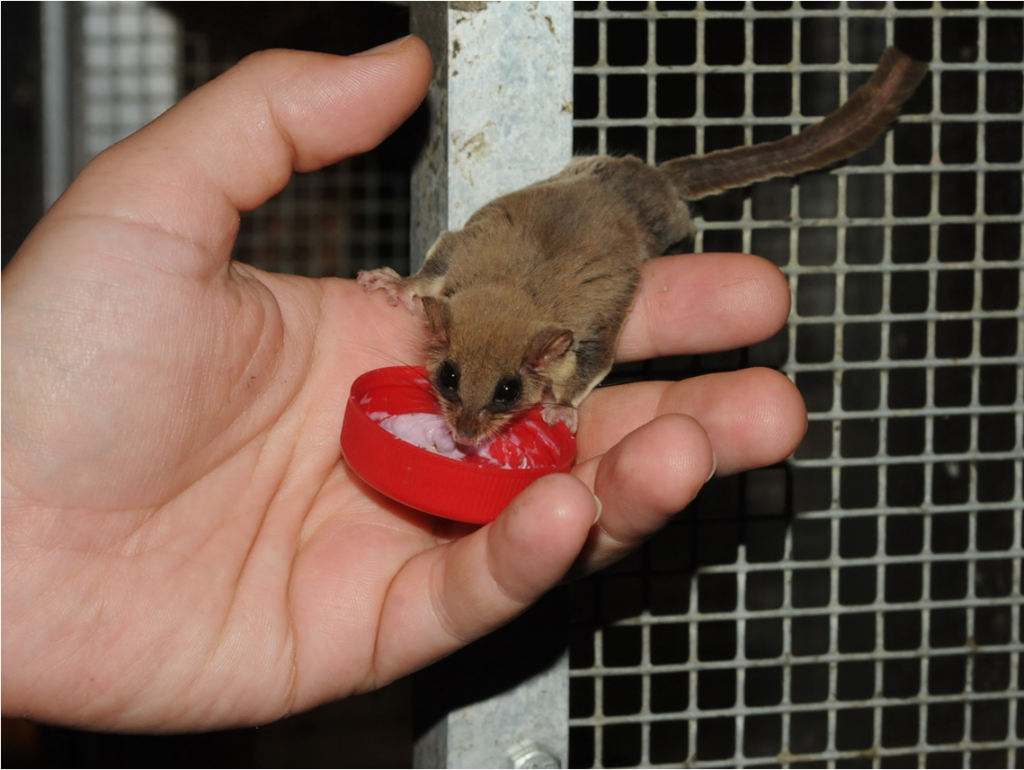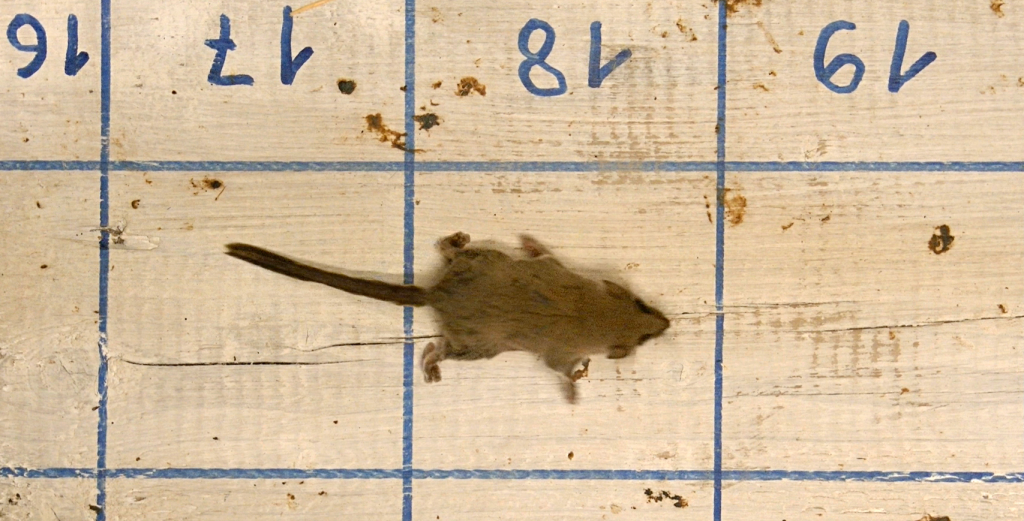
The researchers analyzed the running movements of the smallest gliding mammal on Earth, the pygmy gliding possum (Acrobates pygmaeus). The specialists of the A.N. Severtsov Institute of Ecology and Evolution RAS (IEE RAS) tested the hypothesis that the smaller the animal, the easier it is for it to master gliding.
To do this, they filmed the runs of animals on a wide flat horizontal surface in a spacious enclosure. As a result, data were obtained that can be compared with typical land mammals. In animals, the sequence of setting the legs (gait), speed-time characteristics of running and kinematics (movement in space of individual parts of the body) were studied.
When analyzing footage, the researchers found that feathertail gliders use typical mammalian gaits. It is interesting, however, that all types of gaits used were only asymmetrical, i.e. gallop-like. Despite the fact that it is known from the literature that these pygmy gliders use symmetrical gaits on tree branches (similarly to, for example, the lynx and amble), these gaits were not registered in the experiments of Moscow scientists. As a result, a hypothesis was put forward that these pygmy gliders switch to gallop-like gaits if the width of the support along which they move allows them to put their paws at natural width without narrowing their stride.
Scientists also noticed that, unlike most four-legged mammals, the feathertail glider puts its front and hind limbs at the same distance from the body. Moreover, their hind feet almost never overtake their forelegs and imprint on the track on top of their forepaws or even behind them. So the track of feathertail gliders is very characteristic. This feature is most likely due to the fact that when gliding for an animal, in order to stretch the membrane, it is necessary to spread both pairs of limbs wide apart. According to the authors, in the course of evolution, the width of the legs of the feathertail gliders most likely synchronized as the flight membrane grew along the fore and hind limbs.
Another important difference in the kinematics of running feathertail gliders is the very wide setting of the limbs. This phenomenon scientists have called "deparasagittalization" - as opposed to "parasagittalization" - a phenomenon that characterizes most land mammals. The evolution of mammals has been in the direction of the parasagittal position of the limbs (when the limbs are located under the body). It turned out that in marsupial flying squirrels, on the contrary, their paws are set so strongly to the side that they can be clearly seen if you look at the animal from above. In this they are more reminiscent of lizards than any four- legged animals. This flattening is somewhat reminiscent of the gliding posture, with the paws stretched out to the side, pulling on the web. It is difficult to explain this feature only by specialization in planning. There are six groups of mammals on Earth that have a membrane and are able to plan. And no one, except marsupial flying squirrels, puts their paws so wide. It is assumed that their arboreal lifestyle and small size led to the “deparasagittalization” of pygmy gliders: the pygmy glider lives on trees, but it is so tiny that even the trunks of the smallest trees turn out to be a wide surface for it. In order to effectively move on such surfaces, the animals have to “spread out”, spreading their paws wide.

“As a result of the study, it was concluded that although the gaits of pygmy gliders have not undergone significant changes due to adaptation to gliding, the kinematics of these animals is fundamentally different from other four-legged mammals. The kinematics of running of these flying squirrels differs not only from relatives, but also from all other mammals much more than the kinematics of running of an ordinary squirrel and a common siberian flying squirrel. Thus, the hypothesis that the smaller the glider, the less changes its locomotion (movement) will undergo in the course of evolution, was not confirmed, ”said Viktor Makarov, chief specialist of the Laboratory of Ecology, Physiology and Functional Morphology of Higher Vertebrates of the IEE RAS.
The results of the study are published in the Journal of Experimental Zoology - A in a series of two articles. Running of the feathertail glider (Acrobates pygmaeus ) on level ground: Gaits, Running of the feathertail glider (Acrobates pygmaeus ) on level ground: Kinematics.
Related materials:
Ministry of Science and Higher Education of the Russian Federation: "Fly or run: how
specialization in gliding influenced the running of the pygmy glider"
Search: "Scientists analyzed the running of a pygmy glider - Journal of Experimental
Zoology"
Scientific Russia: "The pygmy glider resembles lizards in its running technique"
